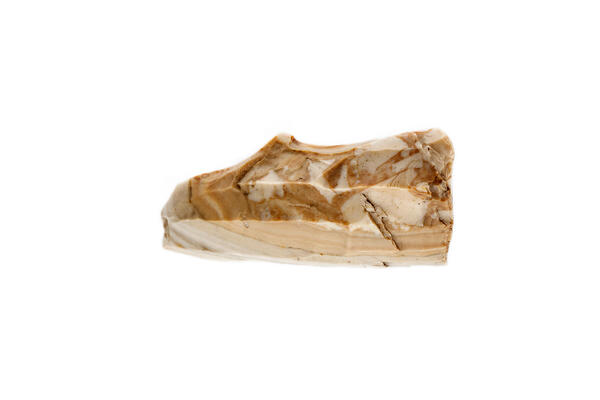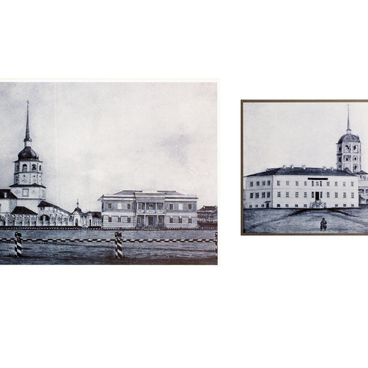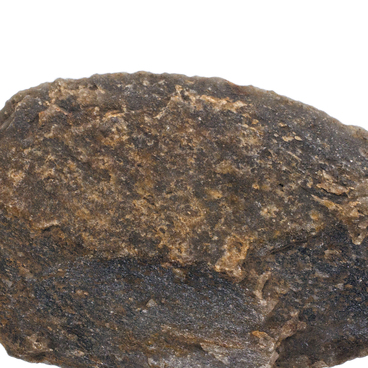A lithic core was a piece of stone from which fragments were chipped or split off in the process of toolmaking. Sometimes, after treatment it was also made into a tool, for example, into choppers and axes. The object name comes from the Latin word ‘nucleus’ — ‘the core’. Despite the variety of rocks, shapes and sizes, all such stones had several specially marked places, from where flakes and lamellae were knapped off.
The nucleus from the Local History Museum collection was discovered at the multilayer Ust-Belaya site and burial ground excavations. The excavations were headed by Herman Medvedev, an Irkutsk archaeologist and ethnographer. The find was dated to the Mesolithic period: the researchers assumed that the nucleus was made 7-12 thousand years ago.
The most common types of lithic cores at that time were prismatic blades, from which laminae of different sizes were removed. This technique of toolmaking was called ‘lamellar splitting’ — it was especially widespread during the Mesolithic and Neolithic era in Siberia, and even older lamellar flakes were found in Africa and in the Middle East.
According to scientists, the lamellar flake manufacturing technology appeared in East Africa hundreds of thousands of years ago. The first lamellar flake tools were found in Kenya at the early human settlement sites of the Kapturin archaeological complex and dated to more than 500 thousand years BC.
The process of chipping off plates and flakes from the nucleus was constantly modified and bettered. The striking techniques changed: first, the early humans used stones, and then they began to use a ‘soft’ drummer made out of horn or wood. In the late Paleolithic era, masters switched from striking to pressing techniques: they pressure treated the stones using special tools.
Approximately at the same time, people mastered microplates manufacturing to make composite tools. They were made out of a bone plate and insertion plates. In the subsequent era, the Neolithic period, composite stone knives were widespread, the blade was made from a nucleus and sharpened using the retouching technique.
The nucleus from the Local History Museum collection was discovered at the multilayer Ust-Belaya site and burial ground excavations. The excavations were headed by Herman Medvedev, an Irkutsk archaeologist and ethnographer. The find was dated to the Mesolithic period: the researchers assumed that the nucleus was made 7-12 thousand years ago.
The most common types of lithic cores at that time were prismatic blades, from which laminae of different sizes were removed. This technique of toolmaking was called ‘lamellar splitting’ — it was especially widespread during the Mesolithic and Neolithic era in Siberia, and even older lamellar flakes were found in Africa and in the Middle East.
According to scientists, the lamellar flake manufacturing technology appeared in East Africa hundreds of thousands of years ago. The first lamellar flake tools were found in Kenya at the early human settlement sites of the Kapturin archaeological complex and dated to more than 500 thousand years BC.
The process of chipping off plates and flakes from the nucleus was constantly modified and bettered. The striking techniques changed: first, the early humans used stones, and then they began to use a ‘soft’ drummer made out of horn or wood. In the late Paleolithic era, masters switched from striking to pressing techniques: they pressure treated the stones using special tools.
Approximately at the same time, people mastered microplates manufacturing to make composite tools. They were made out of a bone plate and insertion plates. In the subsequent era, the Neolithic period, composite stone knives were widespread, the blade was made from a nucleus and sharpened using the retouching technique.



